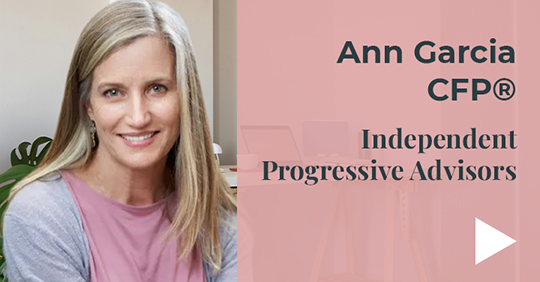
Each year, millions of families go through the financial aid process, many for the first time. Between completing applications online and submitting forms directly with colleges, the process can feel overwhelming. We spoke with three schools belonging to our 529 plan to show that behind every website sits real people considering your student’s financial aid eligibility – and what goes into that decision.
Many thanks to our contributors: Jean Ricker, AVP Student Financial Planning, Dean College; Mike Runiewecz, Assistant Vice Provost & Director of Student Financial Services, Washington University in St. Louis; and Chelsea Theerman, Senior Associate Director of Financial Aid Operations, Clark University.
1. What are the common types and sources of financial aid?
Jean: That’s a big question and a big part of the college search process. Financial aid is made up of multiple things from multiple sources. When a student is applying for admission to an institution that offers merit aid, the student might receive a merit scholarship, which is funding based on a student’s high school performance. Grants and student loans are other forms of aid, and then work programs are an allocation or amount that a student might be able to earn while they’re in school.
Chelsea: I will add that typically when a student applies for admission, they’re automatically considered for merit scholarships through the admissions office. Merit scholarships are separate from any form of need-based financial aid. Most merit scholarships don’t require a separate application, although some do. Here at Clark University, we have a full-tuition scholarship that requires an additional essay, application and interview process. But for all other merit scholarships, the student simply applies for admission and they’re considered.
2. What are the two primary financial aid forms?
Chelsea: You’ve likely heard of the FAFSA. You will submit this form for any school you’re applying to for need-based financial aid. To prepare, you can go online and establish what’s called your FSA ID or your federal student aid ID. That’s like your electronic signature for completing the FAFSA. Both the student and any contributors will need a federal student aid ID. And by contributor, we mean somebody who’s going to be adding their information to a student’s FAFSA.
The student starts the FAFSA, submits some of their information and then invites their contributors or parents to add information. All the information is there, and everything is electronically signed. Then the application will be distributed to the schools the student indicated on the FAFSA.
Private schools that have their own institutional scholarship dollars may ask you to fill out the CSS Profile, which is like the FAFSA in many ways but goes into greater depth. Even though the CSS Profile is a bit more cumbersome, it gives you the opportunity to share more. You can check a box that says you have special circumstances and then you’re able to explain in the application. I will tell you, as a former financial aid counselor now in operations, counsellors read every comment you put there.
You might also like: The FAFSA vs. CSS Profile
3. Describe the financial aid process after submitting your forms.
Chelsea: If you’ve applied for need-based financial aid, typically a school is going to provide an online portal where you or your child can check documents. The school’s probably also generating emails to you (the parent) and to the student notifying you if anything’s missing. Have your child share those emails or access to the portal because you could be waiting and wondering what’s going on, all the while there’s something missing.
At the university I work at, we are not releasing our admissions decisions if a student says they’re applying for need-based financial aid but hasn’t done so yet. Sometimes you’ll find that a financial aid decision is linked to the admissions decision, again, not at all schools. At Clark, we’re going to ask you to complete the financial aid process so we can give you the admissions and financial aid decisions at the same time. My recommendation is to submit the applications early. What you’re doing is buying yourself time until the May 1st decision deadline.
4. What are some changes in the new simplified FAFSA?
Mike: The FAFSA no longer asks how many students in a family are going to be enrolled in college. Also, the whole concept of “parent” has changed with the new FAFSA. Now it’s based on who provides more financial support to a student.
There are significantly fewer questions on the FAFSA than before. It doesn’t go into as much detail as it used to. It really stripped away what I’m going to call extraneous questions, although some schools really need that information. The FAFSA has been simplified to streamline the questions that it’s asking families. Finally, the interface has greatly enhanced.
You might also like: 5 Questions About FAFSA Simplification Answered
5. Why do certain colleges use the CSS Profile?
Mike: WashU is a school that requires the CSS Profile, so I can talk about it from our perspective. We consider this the application for institutional aid. There’s about 300 colleges and universities across the country that use the CSS Profile, which is overseen by a committee of 13 professionals serving their schools in various financial aid roles. Many of the schools using the CSS Profile provide significant institutional aid from their own resources.
The CSS Profile generally costs families $25 for the first school and then $16 for each additional school. Every family in the country that makes less than $100,000 (adjusted gross income) automatically gets a fee waiver. They can submit the application to as many schools as they want for free.
I am 100% committed to delivering financial aid offers on the day we deliver admissions decisions.
I am 100% committed to delivering financial aid offers on the day we deliver admissions decisions. I can do that without the FAFSA because I use the CSS Profile. It gives me the information that would be on the FAFSA plus additional information private schools like mine might be asking families.
Jean: I think institutions that have significant amounts of need-based aid want to know they’ll get the answers to the questions they need to make good decisions, and the CSS Profile gives them that. When you’re feeling the pain of completing it, just know there are good intentions.
Mike: The complexity of the CSS Profile depends on a family’s situation. If you’re somebody like me, all my income shows up on a W2 form. I don’t have a crazy tax situation, so it’s going to take me 15 minutes to do the Profile. If you’ve got a business and a complicated situation, the financial aid process is a lot more complicated.
Chelsea: I’ll add that in all these forms there’s skip logic built in, so if you answer a question a certain way, you may not have to answer others. I’m in agreement that the CSS Profile, at the outset, appears to be a little more daunting than it has to be.
You can really speed through that application if you go into it prepared. There’s a checklist you can download beforehand. Also, for many schools like the university where I work, we’re only requiring the CSS Profile from families in their first year. So, maybe you’ll only have to do this application once.
6. How do colleges handle special circumstances?
A family’s financial situation could change after submitting their financial aid forms.
Jean: My approach is to start with a conversation with the family. I want to know what we might and might not be able to do and the things we can take into consideration. Once we know what the situation is, we can talk about the kind of documentation the family needs to send in. For example, we may need information, say, about a job loss and perhaps severance to put together a new picture of the family’s financial situation.
I am putting a face to the financial aid applications.
Mike: I’d love to add something here because this is my favorite part of the job. I am putting a face to the financial aid applications. Applications capture the dollars and cents about your family, but they don’t do a good job telling me what is unique or special or different about your family’s situation.
If a school requires the CSS Profile, there’s a question specifically asking for that information. I’m paraphrasing here but something like, “Does your family have any circumstances that are impacting your ability to contribute toward your student’s college education?” You want to enter something concise. Let us know what is happening and, most importantly, quantify it with a dollar amount. When I’m looking at your family’s special circumstances, I want to open your student’s file, understand the adjustment, and close the file knowing your student’s financial aid offer is what they deserve.
You might also like: Can I Appeal Financial Aid?
7. What are some student loan options?
Mike: Even if a student is not awarded financial aid, the student remains eligible for a student loan. By policy, WashU doesn’t offer student loans but, if a student requests one, we will provide a loan to the student.
Often, you’re deciding whether to borrow as you’re deciding which school you’re going to attend. The financial aid office might be able to help you with some of your options. The most common loan for undergrad parents is the PLUS loan. It’s a federal loan available to U.S. citizens. Families are eligible to borrow up to the cost of attendance minus financial aid, so you can potentially borrow everything you need.
For many families, you’re going to have to borrow every single year, so I always recommend, before making that decision, ask whether the school is affordable and have a conversation with the financial aid office. Make sure you have a plan for more than one year. Consider how you’re going to get your students started and finished at the institution.











